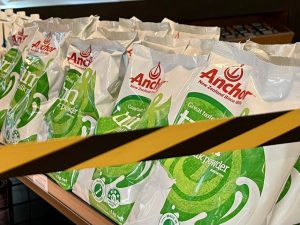
Austin and Eileen Webster, Way-Mor Dairy in Greenleaf, Wisconsin, recently invested in milk metering and monitoring technology for their farm, taking the extra step to choose a system that’s certified by the International Committee for Animal Recording (ICAR). The organization’s stringent standards ensure the data collected for each animal is accurate and dependable.
“We can see right away if a cow deviates in milk production by a certain percentage, and it’s easy to check her out,” says Austin Webster.
Access to data that’s as accurate as technically possible, as dictated by ICAR, ensures the dairy is on top of any general cow health, udder health, nutrition or other changes more precisely than if data accuracy is variable.
For instance, knowing a 1% deviation in milk production is not really a 5% deviation can make all the difference in assessing individual cow performance and creating an action plan for her.
“The data has helped us streamline how we care for our cows, and it’s helped us improve our milking times,” says Webster.
Assessing parlor efficiency
Accurate parlor data, such as milk flow or bimodal milk curves, can not only help ensure each cow is profitable, but can also assist in evaluating parlor workflow and protocol adherence.
“Parlor data can help with parlor personnel training or retraining to help maintain efficiency levels for your parlor team,” notes Matt Heisner, Nedap dairy product specialist.
For example, the unofficial industry standard for parlor efficiency – or throughput – is four to five side changes per hour. In turn, this defines how many cows you can milk in an eight- or 12-hour shift.
For a double-12 parlor, milking at four side changes per hour on both sides can milk 96 cows per hour (24 x 4 = 96), or 696 cows in 7 hours, 15 minutes, leaving 45 minutes for cleanup.[1]
While each farm develops its own throughput metrics, data can help reveal whether parlor protocols are being observed or if procedural drift is taking place. For example, if manual overrides occur with increasing frequency and milking times fluctuate from day to day or between shifts, those actions appear in the data and managers can step in with additional training for parlor personnel.
Precise parlor data also offers farmers peace of mind 24/7.
“We know, even when we’re not here, our employees are doing a great job,” says Webster. “We can log in and monitor the system from anywhere in the world and be able to help if needed even if we’re not here.”
Monitoring performance
Real-time, consistent, accurate milking parlor information means farmers can confidently make management decisions for individual animals and know with greater certainty which cows are the most profitable. It’s another way to optimize farm profitability on a per-stall basis.
“The importance of accurate parlor data can’t be emphasized enough,” says Heisner. “It’s the best way for farmers to ensure each animal is performing at optimal levels and to show your team when an animal requires intervention.”
Charting group and herd performance, and detecting changes or irregularities give you a tool to use to respond to these variations. And make improvements to benefit individual cows, groups, the herd and your team.
Visit nedap-livestockmanagement.com to learn more about how actionable data can help optimize your dairy’s peak performance.

























